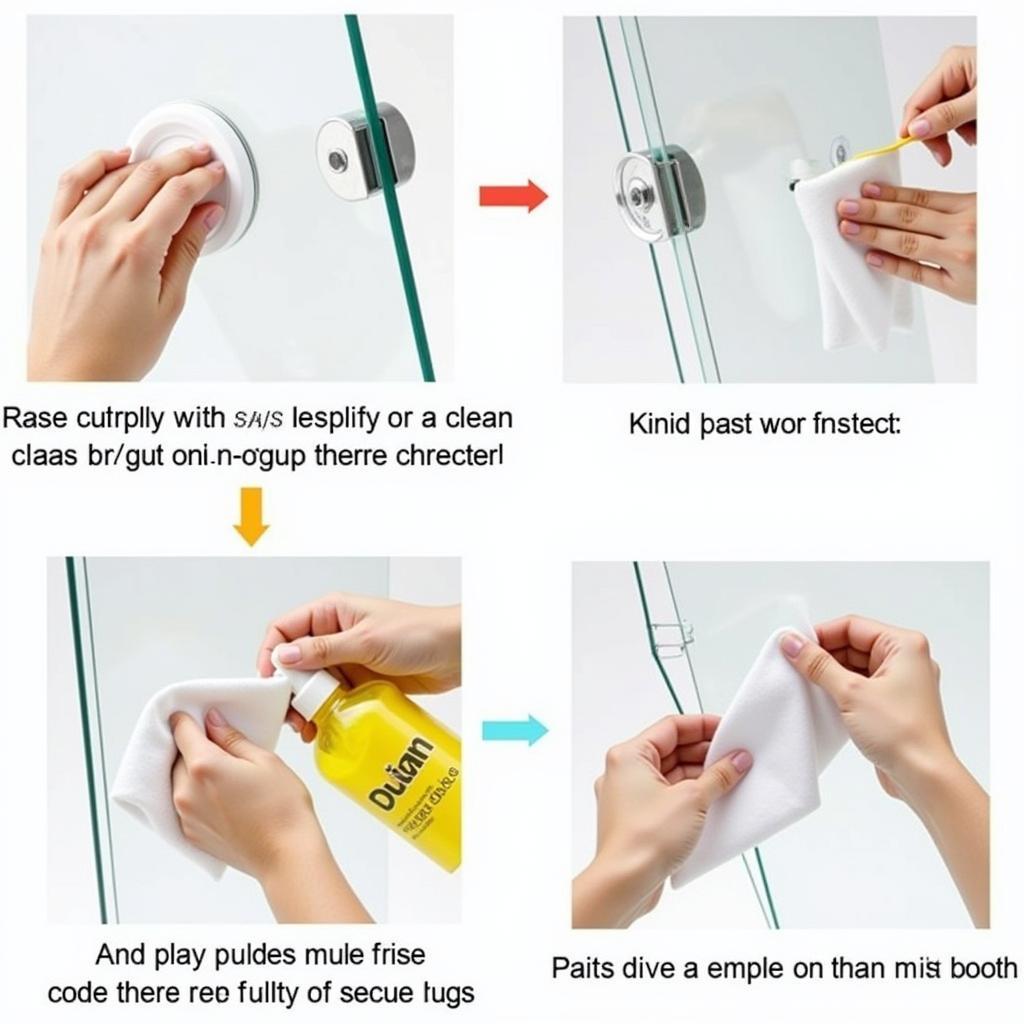Suction cups are incredibly useful tools for a variety of applications, from hanging decorations to securing objects in place. However, getting them to stick reliably can sometimes be a challenge. This guide will provide you with a comprehensive understanding of how to apply suction cups effectively, ensuring a strong and lasting hold.
Understanding the Science Behind Suction Cups
Suction cups work by creating a vacuum between the cup and the surface. When you press a suction cup against a smooth, non-porous surface, you force out the air trapped inside. This creates an area of lower pressure within the cup compared to the atmospheric pressure outside, effectively “sucking” the cup onto the surface. The key to a strong hold lies in maximizing this pressure difference and maintaining a good seal. Similar to how best cellulite cups create suction on the skin, the principle remains the same – creating a pressure differential.
Choosing the Right Suction Cup
Not all suction cups are created equal. The material, size, and shape of the suction cup play crucial roles in its effectiveness. For heavier objects, choose larger suction cups with thicker, more flexible rims. Consider the surface material as well. Smooth, non-porous surfaces like glass or tile are ideal for suction cups. Rough or porous surfaces, like wood or textured plastic, will not create a good seal.
Factors Affecting Suction Cup Adhesion
Several factors can affect how well a suction cup adheres:
- Surface Cleanliness: Dust, dirt, and grime can prevent a proper seal. Always clean both the suction cup and the surface thoroughly before application.
- Surface Smoothness: As mentioned earlier, smooth surfaces are essential. Even minor imperfections can compromise the seal.
- Suction Cup Material: Silicone suction cups are generally more durable and offer better grip than rubber ones.
- Temperature: Extreme temperatures can affect the flexibility of the suction cup and its ability to adhere.
- Humidity: High humidity can reduce the effectiveness of suction cups.
How to Apply Suction Cups Correctly
Here’s a step-by-step guide to applying suction cups for optimal adhesion:
- Clean the Surface: Use a cleaning solution and a clean cloth to thoroughly clean the surface where you’ll be applying the suction cup. Make sure it’s completely dry.
- Clean the Suction Cup: Clean the suction cup itself with warm, soapy water and rinse it thoroughly. Dry it completely.
- Inspect the Suction Cup: Check the suction cup for any damage or deformities. If the rim is cracked or warped, the suction cup will not work effectively. Just like checking how to make suction cups stick again, ensuring the integrity of the cup is vital.
- Position the Suction Cup: Carefully position the suction cup on the clean, dry surface. Make sure it’s centered and flush against the surface.
- Press Firmly: Press the suction cup firmly against the surface, pushing out as much air as possible. You might hear a slight popping sound as the air is expelled.
- Check the Seal: Gently tug on the suction cup to check the seal. If it feels secure, it’s properly attached. If it moves easily, repeat the process.
Troubleshooting Common Suction Cup Problems
Sometimes, even with proper application, suction cups can lose their grip. Here are some common problems and solutions:
- Suction Cup Falls Off: The surface might be dirty or not smooth enough. Try cleaning the surface again or choosing a different location. The suction cup itself might be damaged. If so, replace it.
- Suction Cup Doesn’t Stick at All: The surface might be unsuitable for suction cups. Consider using an alternative mounting method.
- Suction Cup Loses Suction Over Time: This is often due to a slow leak of air back into the cup. This can happen if the surface is slightly uneven. Try adding a thin layer of petroleum jelly to the rim of the suction cup to create a better seal. Similar to understanding how to clean bath mats with suction cups vinegar, maintaining cleanliness helps maintain suction.
Expert Insights
John Doe, a leading industrial designer specializing in adhesive technology, notes: “The effectiveness of a suction cup hinges on the creation of a near-perfect vacuum. Achieving this requires meticulous attention to surface preparation and choosing the right suction cup for the specific application.”
Jane Smith, a materials scientist with extensive experience in polymer science, adds: “Silicone suction cups offer superior durability and flexibility compared to traditional rubber ones. Their ability to conform to slight surface irregularities enhances their gripping power.”
By following these guidelines and understanding the science behind suction cups, you can ensure a strong, reliable hold for a variety of applications. If you need further assistance, feel free to contact us. Phone: 0372999996, Email: bong.da@gmail.com, Address: 236 Cau Giay, Ha Noi. Our customer service team is available 24/7.
FAQ
- What are the best surfaces for suction cups?
- How can I make my suction cups stick better?
- Can I use suction cups on textured surfaces?
- What are the different types of suction cups available?
- How do I clean my suction cups?
- Can suction cups be used outdoors?
- How much weight can a suction cup hold?
You might find additional helpful information in articles like cupping points for neck pain and cupping for fascia release.

